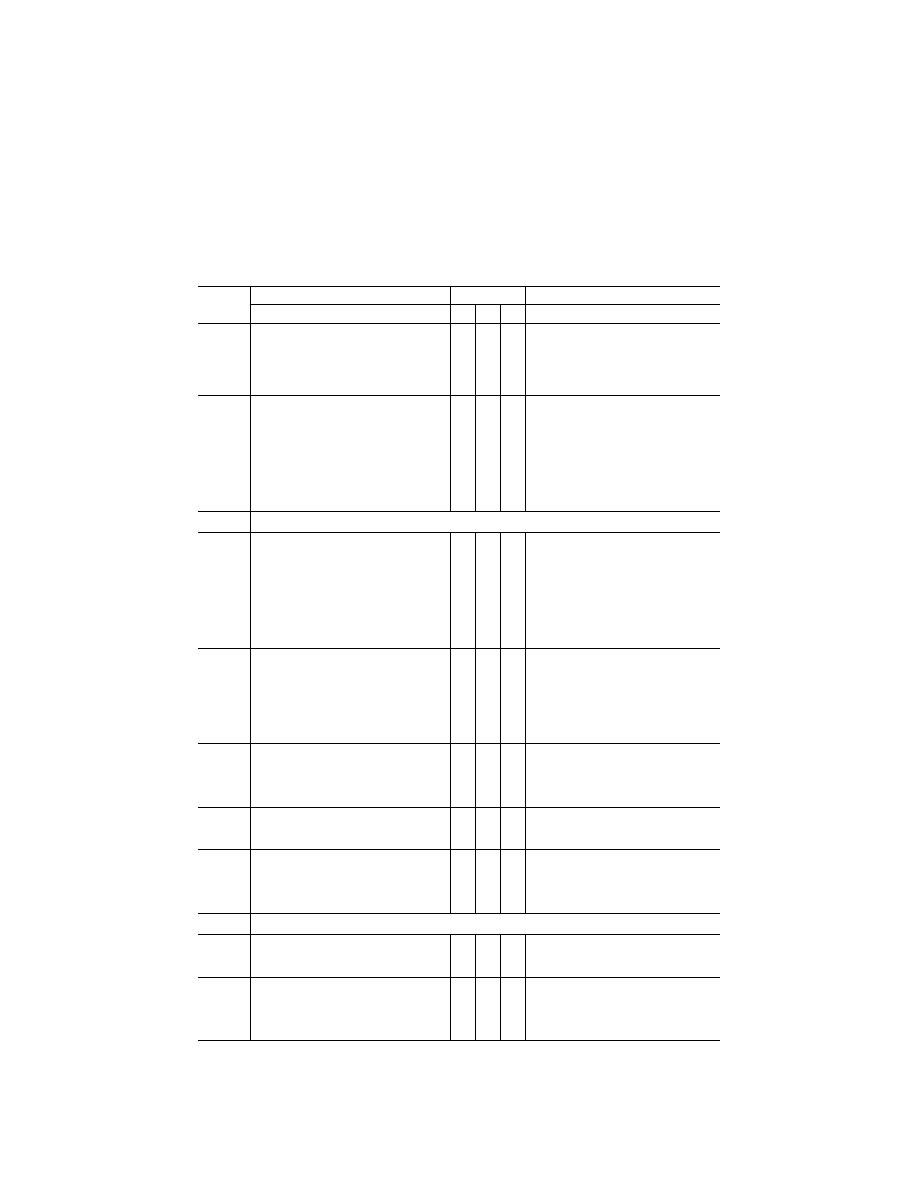
329
Federal Aviation Administration, DOT
Pt. 60, App. C
T
ABLE
C1A—M
INIMUM
S
IMULATOR
R
EQUIREMENTS
—Continued
Entry No.
QPS requirements
Simulator levels
Information
General simulator requirements
B
C
D
Notes
3.d. ...........
The simulator must provide pilot controls with
control forces and control travel that cor-
respond to the simulated helicopter. The
simulator must also react in the same man-
ner as the helicopter under the same flight
conditions.
X X X
3.e. ...........
Simulator control feel dynamics must replicate
the helicopter simulated. This must be deter-
mined by comparing a recording of the con-
trol feel dynamics of the simulator to heli-
copter measurements. For initial and up-
grade evaluations, the control dynamic char-
acteristics must be measured and recorded
directly from the flight deck controls, and
must be accomplished in takeoff, cruise, and
landing conditions and configurations.
X X
4.
..............
Instructor/Evaluator Facilities
4.a. ...........
In addition to the flight crewmember stations,
the simulator must have at least two suitable
seats for the instructor/check airman and
FAA inspector. These seats must provide
adequate vision to the pilot’s panel and for-
ward windows. All seats other than flight
crew seats need not represent those found
in the helicopter but must be adequately se-
cured to the floor and equipped with similar
positive restraint devices.
X
X
X The NSPM will consider alternatives to this
standard for additional seats based on
unique flight deck configurations.
4.b. ...........
The simulator must have controls that enable
the instructor/evaluator to control all required
system variables and insert all abnormal or
emergency conditions into the simulated hel-
icopter systems as described in the spon-
sor’s FAA-approved training program, or as
described in the relevant operating manual
as appropriate.
X X X
4.c. ...........
The simulator must have instructor controls for
all environmental effects expected to be
available at the IOS; e.g., clouds, visibility,
icing, precipitation, temperature, storm cells,
and wind speed and direction.
X X X
4.d. ...........
The simulator must provide the instructor or
evaluator the ability to present ground and
air hazards.
X
X
For example, another aircraft crossing the ac-
tive runway and converging airborne traffic.
4.e. ...........
The simulator must provide the instructor or
evaluator the ability to present the effect of
re-circulating dust, water vapor, or snow
conditions that develop as a result of rotor
downwash.
X
X
This is a selectable condition that is not re-
quired for all operations on or near the sur-
face.
5.
..............
Motion System
5.a. ...........
The simulator must have motion (force) cues
perceptible to the pilot that are representa-
tive of the motion in a helicopter.
X
X
X For example, touchdown cues should be a
function of the rate of descent (RoD) of the
simulated helicopter.
5.b. ...........
The simulator must have a motion (force cue-
ing) system with a minimum of three de-
grees of freedom (at least pitch, roll, and
heave).
An SOC is required.
X
VerDate Sep<11>2014
16:30 Jun 25, 2019
Jkt 247047
PO 00000
Frm 00339
Fmt 8010
Sfmt 8002
Q:\14\14V2.TXT
PC31
kpayne on VMOFRWIN702 with $$_JOB